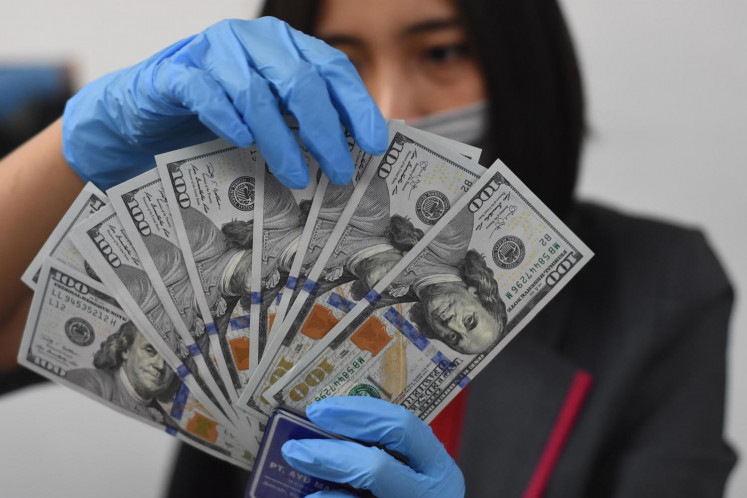High risks loom for RI bankers next year
Next year is going to be tough for Indonesian bankers, as the risk of financial market shocks is expected to be more severe than that witnessed by the country in 2013, Finance Minister Chatib Basri has warned
Change Size

N
ext year is going to be tough for Indonesian bankers, as the risk of financial market shocks is expected to be more severe than that witnessed by the country in 2013, Finance Minister Chatib Basri has warned.
Speaking during the Indonesian Banking Expo in Jakarta on Thursday, the minister suggested that bankers remain cautious next year as the impact of interest rate hikes in the United States could trigger fund outflows, ultimately causing a dry-up in domestic liquidity in Indonesia's banking system.
'It's very important to tone down your expectations because 2015 will be more difficult than 2014, possibly even more difficult than 2013,' he told bankers.
Chatib noted the possibility that the US Federal Reserve would hike its benchmark rate by 100 basis points from the current level of 0 to 0.25 percent, making US assets more attractive and consequently absorbing liquidity stashed in emerging markets.
'Our banking industry will feel the impact in 2015, with possibly greater segmentation between big banks and small banks,' said Chatib, a former economist. 'It's possible that some banks would mobilize the increase of their deposit rates, giving upward pressure to their lending rates.'
- Chatib says Fed could hike its benchmark rate by 100 basis points
- Fed rate hike could trigger capital outflow from the country
- Indonesia suffered greatly in 2013 from talks of US monetary tightening
In 2013, Indonesia suffered greatly from talks of tightening in US monetary policy, with the round of capital outflows in Indonesia taking a toll on the rupiah, which became Asia's worst-performing currency as it weakened by 26 percent throughout last year.
Bank Indonesia (BI), the country's central bank, was forced to hike its interest rate by 175 basis points to 7.5 percent within a six-month time frame ' the most aggressive monetary tightening in nearly a decade ' to stabilize the economy and shield the rupiah from outflows.
The monetary tightening has already had an impact on the banking industry this year, squeezing banks' margins and putting the brakes on their rapid lending expansion.
In 2014, annual lending growth in Indonesia's banking sector is estimated by the Financial Services Authority (OJK) to hit between 15 to 16 percent, while local banks have registered 20 percent-plus lending growth over the past three years.
According to Bank Mandiri president director Budi Gunadi Sadikin, BI will face two options when the benchmark interest rate in the US is increased. 'It may opt to jack up the BI rate to prevent capital outflow, or keep it at the same level, but at the expense of a weakening rupiah,' he said on Thursday.
If BI increases its own benchmark interest rate, lenders will most likely see their margins squeezed, and adjustments in the lenders' own rates may result in rising bad debt.
'So we really have to maintain the credit quality,' Budi said.
On the other hand, if the central bank chooses to keep the rate at the same level, foreign exchange-denominated loans will be affected, according to Budi.
'We have to make sure that companies with high exposure to these loans have enough EBITDA [earnings before interest, tax, depreciation and amortization] to pay off their debts,' he said.
Mandiri's own data shows that in the first half, its loan-to-deposit ratio (LDR) stood at 87 percent and its net non-performing loans (NPL) ratio was at 0.8 percent. Both ratios were well below the benchmarks set by financial regulators, which are 92 percent and 5 percent, respectively.









